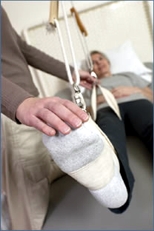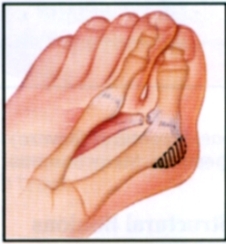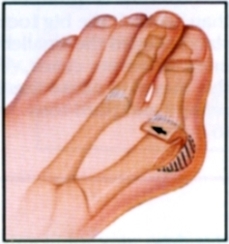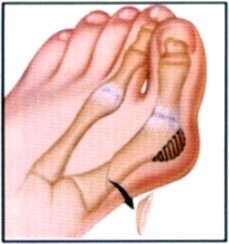|
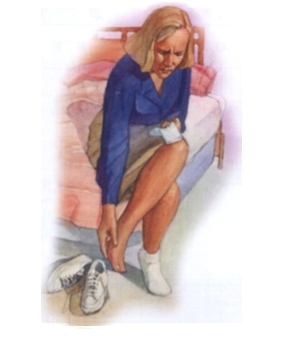
|
|
What Causes Bunions?
Although they may develop on the fifth (little) toe, bunions usually occur at the base of the
big toe. Bunions are often caused by incorrect foot mechanics. The foot may be flatten too much,
forcing the toe joint to move beyond normal range. In some cases, joint damage caused by arthritis
or an injury produces a bunion. And some people are born with the tendency to develop bunions. If
you're at risk for developing a bunion, wearing high-heeled or poorly fitting shoes makes the
problem worse.
|
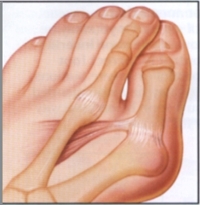
A bunion is a
bony bump, usually near the joint at the base of the big toe
|
|
Your big toe is the hardest-working
toe. Every time your foot pushes off the ground, this toe supports most of your body's weight.
Because the big toe is so critical to movement, any problem with it can make walking or even
standing painful.
A bunion
(excess or misalligned bone in the joint) is one of the most common big toe problems. In addition
to causing pain, a bunion changes the shape of your foot, making it harder to find
shoes that fit. But you don't have to hobble for the rest of your life. Bunions can be treated.
With your doctor's help, your feet can feel and look
better.
F o o t n o t e
Squeezing a square-shaped foot into a shoe with a
pointed toe increases the risk of a painful bunion.
|
|
Types of Bunions |
|
|
Positional (mild) bunions arise from the growth of new bone.
Structural (severe) bunions result when the joint at the base of the toe
shifts position. Many bunions are a combination of both types.
|
|
|
Positional Bunions
|
Structural Bunions |
| |
A new bone grows, the joint enlarges. This stretches the joint's outer covering. Force
created by the stretching pushes the big toe toward the smaller ones. Eventually, the inside
tendons tighten, pulling the big toe farther out of
alignment.
|
When the angle between the bones of the first and second toes is greater than normal, the big
toe slants toward the smaller ones. In severe cases, this may also cause the second and third toes
to buckle.
|
| |
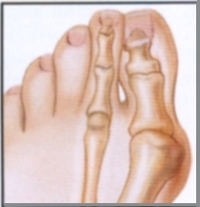 |
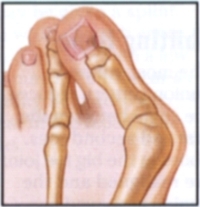
|
|
|
|
|
|
|
| |
|
| Physical Exam |
|
| To determine the best treatment for your problem, your doctor may ask if and when your
bunion causes pain. Your doctor may also test how far and how smoothly the affected joint moves. To
see if incorrect foot mechanics is causing your problem, your doctor may watch how your
feet rotate and flatten as you walk. |
| |
|
|
|
Testing
X-rays may be taken of your foot to show the position of the big toe joint. Your doctor may also
want to see whether the bunion is affecting other bones in your foot.
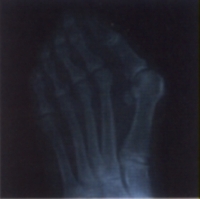
|
|
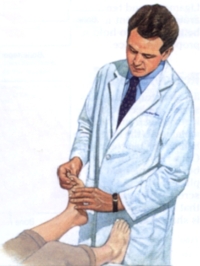
|
To see how well a joint works and
to learn if movement causes pain, your doctor may move the joint back and forth.
|
| |
|
|
|
|
|
|
|
How Are Bunions
Treated?
If a bunion is not painful or
severe, your doctor may recommend that you wear a different style of shoes. Or you may be
prescribed custom-made shoe inserts
(orthoses) to control incorrect foot mechanics. For painful or severe
bunions, outpatient surgery may be recommended. After surgery, you'll be on your way home and ready
for recovery.
|

